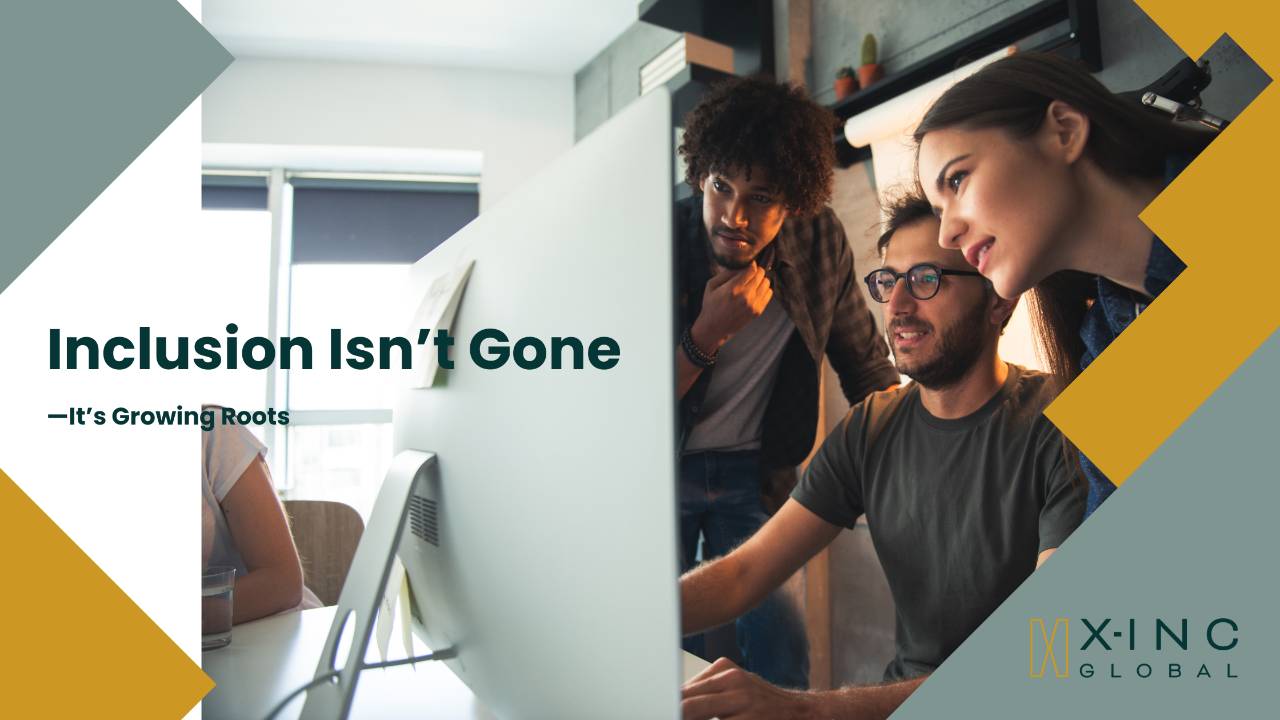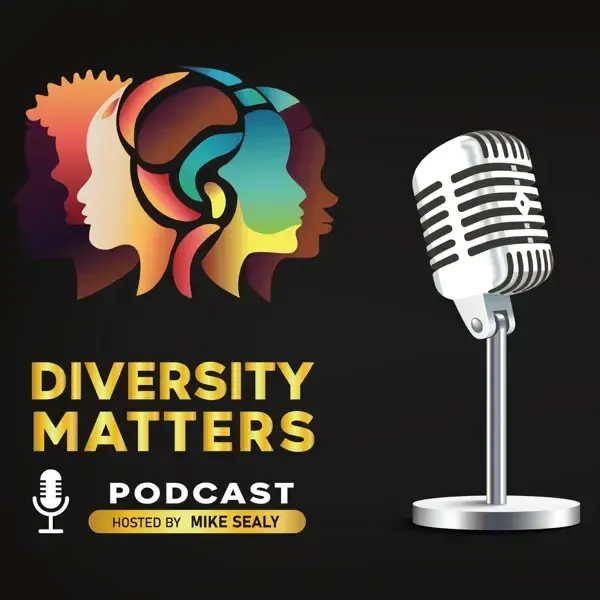Inclusion Isn’t Dead

It’s evolving slowly, quietly, strategically, and relentlessly in many organisations
If you’ve been watching closely, you’ve seen the shift which has accelerated over the last 12 months. Inclusion efforts aren’t splashed across front pages like they were a few years ago. DEI leaders are being let go, and the roles are being eliminated through executive orders. Initiatives are being renamed or dropped entirely, and on the surface, it looks like a retreat.
Or so it seems, but don’t be fooled.
Inclusion isn’t being uprooted. It’s getting smarter and more embedded into the foundations of how organisations function. It’s no longer just a program, a pledge, or a poster on the wall. It’s becoming infrastructure. And that’s not a retreat. It’s a pivot, a recalibration, and if I am honest, this is what needed to happen a long time ago. The only thing I don’t like is that it has become stealthier. Organisations are doing this quietly, with no big fuss or shouting from the rooftops.
Think of it as a strategic invisibility cloak. Not because the mission is any less urgent, but because the strategy is shifting from performative to permanent or at least that is my hope. Organisations should be moving firmly away from the tick box exercise that only promotes optics over impact, i.e. ‘diversity washing’.
The Volume Is Down, but the Work Is Deeper
The last few years brought a wave of performative allyship. Loud statements. Social media black squares. “Listening sessions” that led to... nothing. Admittedly, some of that was necessary awareness-building, but a lot of it was noise. And now? The noise is fading. The spotlight has moved on.
But the real work? It's still happening, just out of sight but hopefully not out of mind.
Inclusion today is being coded into hiring systems, leadership pipelines, procurement policies, and product design. It’s being written into how feedback is given, how talent is measured, and how meetings are run. Implementation is executed quietly and purposely by those organisations that really get it and understand the value both culturally and commercially. They know that inclusive leadership isn’t about how loud your banner is. It’s about how durable your systems are.
This Is the Real Test
The current environment is not gentle. Political backlash, weaponised language, and semantic landmines have made “DEI” a controversial term in some spaces. Leaders are wary. Some are dropping the acronym altogether. Others are choosing euphemisms like “belonging”, “fairness”, “equity”, even “people-first culture.”
But let’s be clear, changing the label doesn’t change the need. Organisations still need diverse voices at the table. They still need equitable access to opportunity. They still need cultures where people feel safe and respected enough to contribute fully.
The test now is whether leaders can adapt. Whether they can embed inclusion into the DNA of their organisations so thoroughly that it doesn’t depend on slogans or surface-level wins. Whether they can build it into the system and keep it there, even when the spotlight dims.
That’s what durability looks like.
Challenges Slowing Progress
We all know, however, that this shift isn’t without friction. There are real, structural challenges still slowing things down.
- Backlash fatigue
Many leaders and DEI practitioners are exhausted. They’ve spent the last few years pushing initiatives uphill only to face cuts, scepticism, and accusations of “wokeness.” The emotional labour is heavy, especially for those who carry both personal and professional stakes in this work. - Shifting semantics
Words like “equity”, and “anti-racism” have become politically charged. Some organisations are watering down their language to avoid controversy, but in doing so, they risk diluting their intent. When clarity is lost, so is accountability. - Short-term thinking
Many companies want immediate results, numbers they can report in a quarter. This has been their normal practice of running a business, but culture change isn’t a quarterly game. It takes time. It takes systems thinking. It takes leaders willing to commit even when the ROI isn’t instantly measurable. - Symbolism over substance
There’s still way too much energy going into optics. A “diverse” stock photo on the website doesn’t fix biased algorithms. A panel discussion doesn’t offset a lack of diverse decision-makers. Symbolism without structural change is just... theatre. Many companies have restructured and renamed their teams focused on DEI, but the plans and objectives remain unchanged, indicating that no significant progress will be made towards meaningful change. - Unequal pressure across industries
Some sectors, such as tech, finance, and law, are feeling stronger pushback against inclusion work than others. Public institutions and nonprofits often remain more openly committed. But the inconsistency creates confusion and slows collective progress.
So, What Now?
This is the moment for inclusive leadership to demonstrate its maturity. Not by shouting louder, but by becoming smarter. By establishing processes that outlast trend cycles. By making inclusion the default setting, not a separate initiative.
Ask yourself:
- Is equity built into how you recruit, hire, promote, and develop people?
- Are your systems transparent and fair, or are they just “how it’s always been”?
- Do marginalised voices have real influence, or just visibility?
If the answer to these questions isn’t clear, you don’t need a new banner. You need better architecture.
Bottom Line
Inclusion isn’t dying. It’s digging in. It’s becoming less visible on the surface, but more baked in underneath. And that’s not failure. That’s progress. The flash has faded, but the foundation is being laid.
Strategic invisibility isn’t silence. It’s a strength. It means the work is becoming part of how things are done, not just what gets said in public.
For organisations committed to lasting change, this is a long-term effort. Not louder or flashier, but wiser, stronger, and permanent rather than temporary.
What you can do
Audit your systems. Don’t just talk inclusion, engineer it. Start with hiring, promotion, and decision-making processes. This work doesn’t need louder voices. It needs smarter allies. Let others chase trends. You concentrate on building systems that last.
If you need a partner to challenge what’s ‘business as usual,’ let’s talk.”
Download Your FREE GUIDE NOW
Enter your details below for instant access
By signing up to this RESOURCE/GUIDE/VIDEO you consent to receive regular emails from X-Inc Global with updates and the occasional promotion for products. You can unsubscribe at any time. View our privacy policy in the footer.


